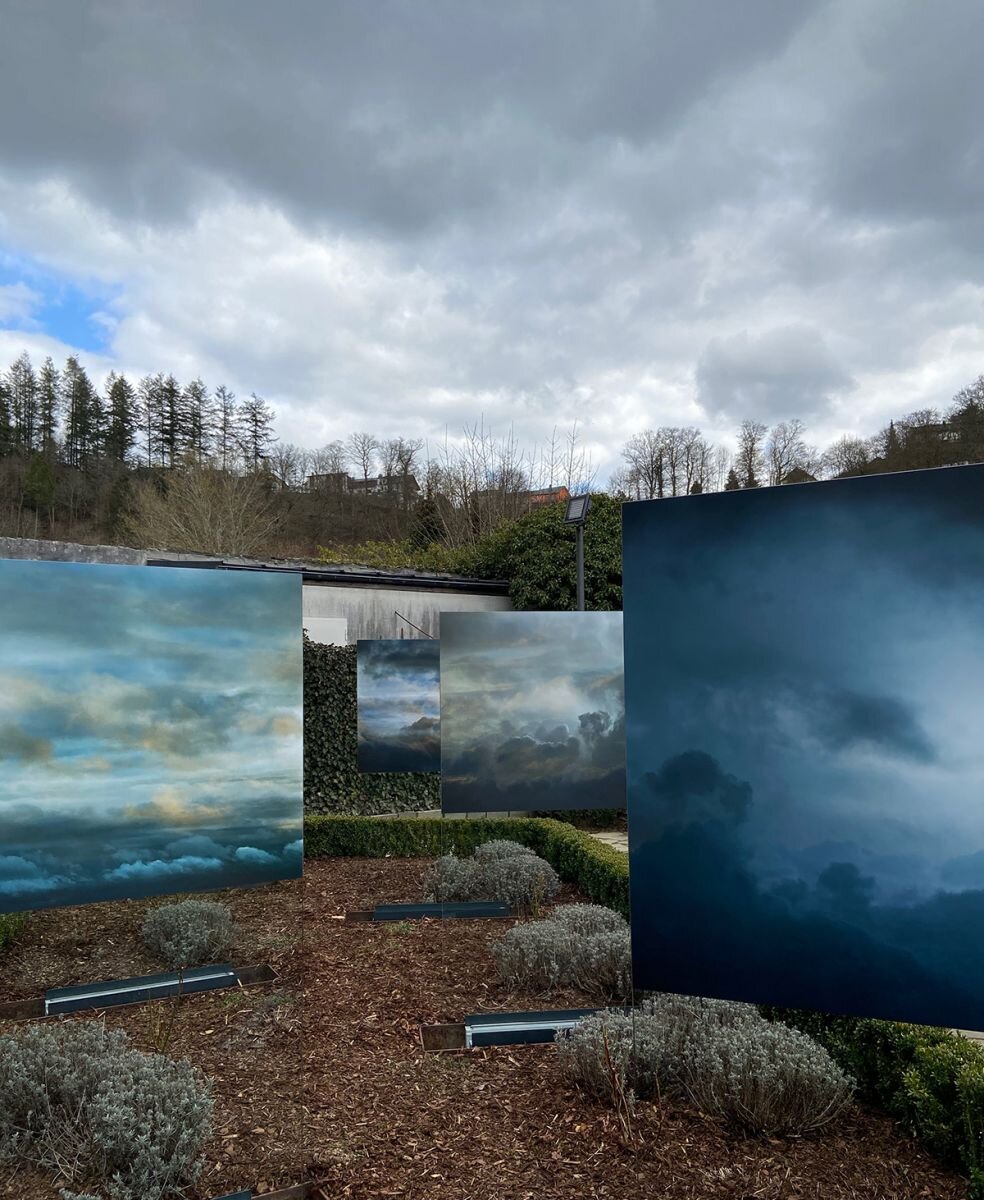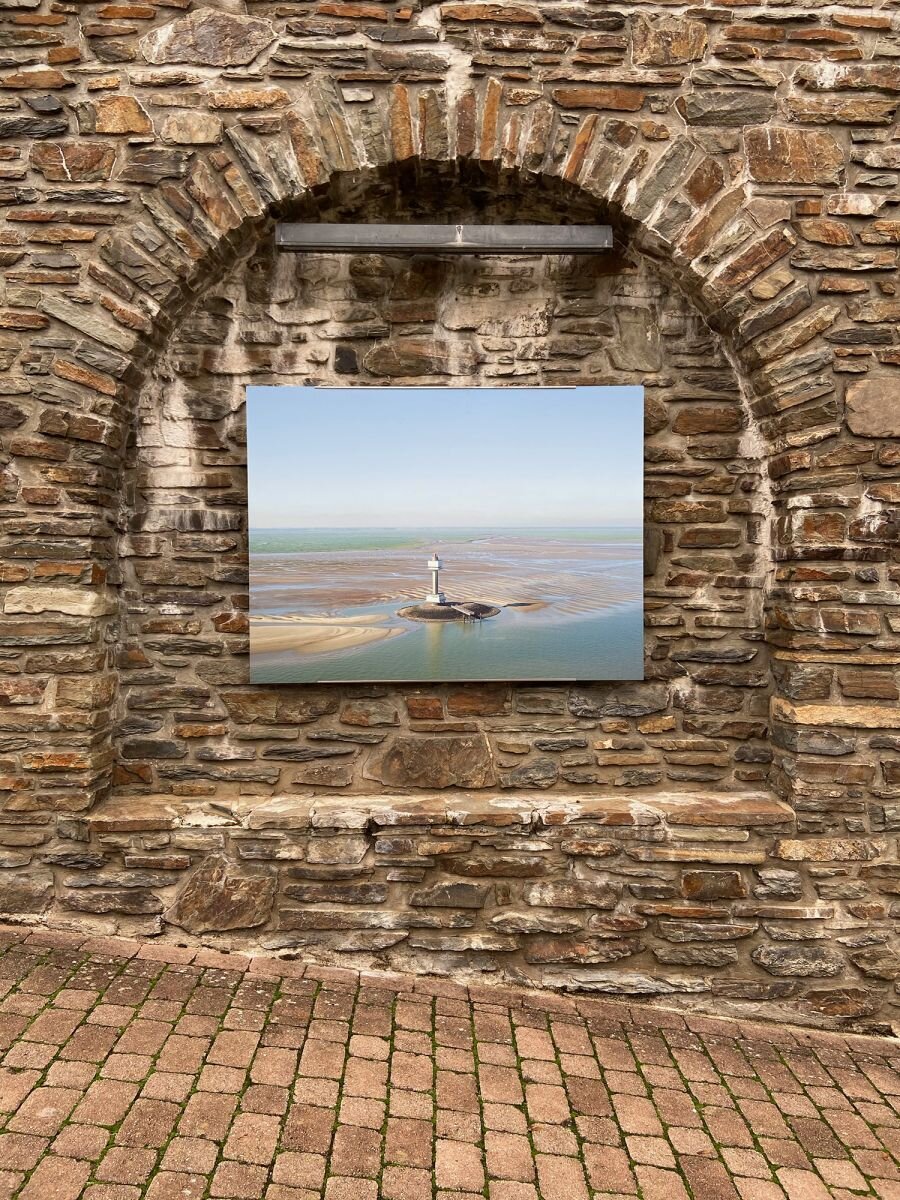
Lisa Oppenheim: Monsieur Steichen | Mudam Luxembourg – Musée d’Art Moderne Grand-Duc Jean
Mudam Luxembourg – Musée d’Art Moderne Grand-Duc Jean
14. Februar – 24. August 2025
Lisa Oppenheim: Monsieur Steichen
Die Ausstellung findet im Rahmen des Europäischen Monats der Fotografie Luxemburg statt.
Lisa Oppenheim, in Zusammenarbeit mit Zoe Latta, Textile design, 2024, Courtesy die Künstlerin und Tanya Bonakdar Gallery, New York / Los Angeles
Das Mudam Luxembourg präsentiert die Ausstellung "Monsieur Steichen" von Lisa Oppenheim. Oppenheim zeichnet ein überraschendes Porträt von Edward Steichen, indem sie sich auf seine unbekannteren Leidenschaften konzentriert: Blumen, Textildesigns und Farbfotografie.
Die Ausstellung erweckt unter anderem eine ausgestorbene Schwertlilienart namens "Monsieur Steichen" durch eine Kombination aus Steichens Dye-Transfer-Technik und künstlicher Intelligenz wieder zum Leben. Zudem entwickelte Oppenheim eine neue Stoffkollektion in Zusammenarbeit mit Zoe Latta, basierend auf Steichens unverwendeten Textilmotiven. Paravents mit diesen Stoffen zeigen auf der Rückseite Fotografien von Steichens Ehefrauen und seiner Mutter.
Weitere Werke sind Oppenheims "Steichen Studies" und die sich verändernde florale Komposition "Bouquet of Flowers (a photographic score) 1940/2025". Im Außenbereich des Mudam entsteht zudem "Eduard’s Garden", eine Rittersporn-Installation, die Steichens botanische Leidenschaft widerspiegelt und während der Ausstellung wachsen wird.
"Monsieur Steichen" lädt dazu ein, die Transformationsmöglichkeiten des Bildes zu erkunden und Steichens Arbeitsweise neu zu interpretieren.
Lisa Oppenheim, in Zusammenarbeit mit Zoe Latta, Textile design, 2024, Courtesy die Künstlerin und Tanya Bonakdar Gallery, New York / Los Angeles
Le Mudam Luxembourg présente l'exposition "Monsieur Steichen" de Lisa Oppenheim (14.02. – 24.08.2025). Oppenheim y dresse un portrait surprenant d'Edward Steichen, en se concentrant sur ses passions moins connues : les fleurs, les créations textiles et la photographie couleur.
L'exposition ressuscite notamment une espèce d'iris éteinte appelée "Monsieur Steichen" grâce à une combinaison de la technique de Dye-Transfer de Steichen et de l'intelligence artificielle. Oppenheim a également conçu une nouvelle collection de tissus en collaboration avec Zoe Latta, basée sur des motifs textiles non utilisés par Steichen. Des paravents recouverts de ces tissus présentent au dos des photographies des épouses et de la mère de Steichen.
D'autres œuvres incluent les "Steichen Studies" d'Oppenheim et la composition florale évolutive "Bouquet of Flowers (a photographic score) 1940/2025". À l'extérieur du Mudam, "Eduard’s Garden", une installation de delphiniums, reflétera la passion botanique de Steichen et grandira pendant l'exposition.
"Monsieur Steichen" invite à explorer les possibilités de transformation de l'image et à réinterpréter l'approche artistique de Steichen.
Lisa Oppenheim, Mme Steichen (Version V), 2024, Courtesy die Künstlerin und Tanya Bonakdar Gallery, New York / Los Angeles
Il Mudam Luxembourg presenta la mostra "Monsieur Steichen" di Lisa Oppenheim (14.02. – 24.08.2025). Oppenheim traccia un sorprendente ritratto di Edward Steichen, concentrandosi sulle sue passioni meno note: i fiori, i design tessili e la fotografia a colori.
L'esposizione riporta in vita una specie estinta di iris chiamata "Monsieur Steichen" attraverso una combinazione della tecnica Dye-Transfer di Steichen e dell'intelligenza artificiale. Inoltre, Oppenheim ha creato una nuova collezione di tessuti in collaborazione con Zoe Latta, basata su motivi tessili inutilizzati da Steichen. I paraventi rivestiti con questi tessuti mostrano sul retro fotografie delle mogli e della madre di Steichen.
Altre opere includono gli "Steichen Studies" di Oppenheim e la composizione floreale in evoluzione "Bouquet of Flowers (a photographic score) 1940/2025". All'esterno del Mudam, "Eduard’s Garden", un'installazione di delphinium, rifletterà la passione botanica di Steichen e crescerà durante la mostra.
"Monsieur Steichen" invita a esplorare le possibilità di trasformazione dell'immagine e a reinterpretare l'approccio artistico di Steichen.
Lisa Oppenheim, Mlle Steichen (Version XI), 2024, Courtesy die Künstlerin und Tanya Bonakdar Gallery, New York / Los Angeles
The Mudam Luxembourg presents "Monsieur Steichen", an exhibition by American artist Lisa Oppenheim (14.02. – 24.08.2025). Oppenheim offers a surprising portrait of Edward Steichen, focusing on his lesser-known passions: flowers, textile designs, and color photography.
The exhibition, among other things, revives an extinct iris species named "Monsieur Steichen" by combining Steichen's Dye-Transfer technique with artificial intelligence. Oppenheim also designed a new textile collection in collaboration with Zoe Latta, based on Steichen's unused textile motifs. Screens covered with these fabrics feature photographs of Steichen's wives and mother on their reverse sides.
Further works include Oppenheim's "Steichen Studies" and the evolving floral composition "Bouquet of Flowers (a photographic score) 1940/2025". Outside the Mudam, "Eduard’s Garden", a delphinium installation, will reflect Steichen's botanical passion and grow during the exhibition.
"Monsieur Steichen" invites viewers to explore the transformative possibilities of the image and reinterpret Steichen's artistic approach.

























































